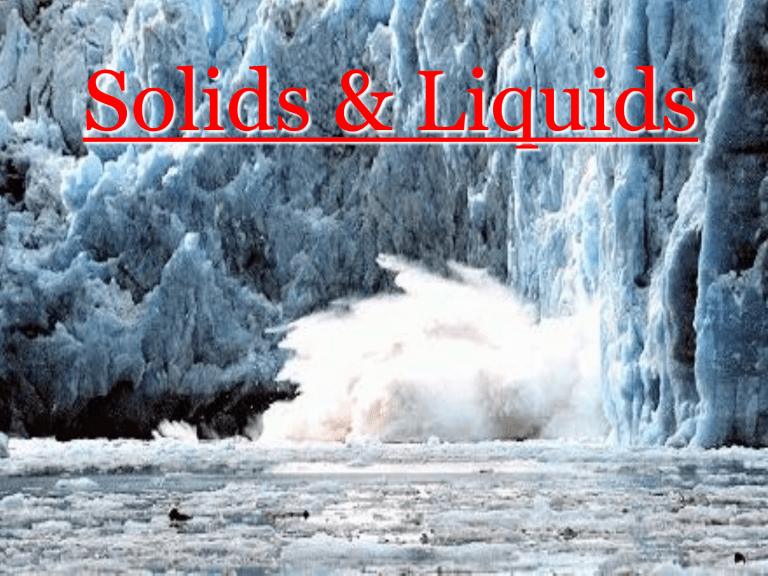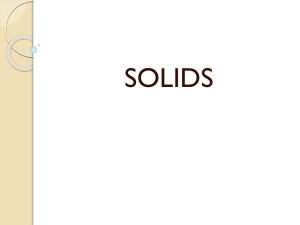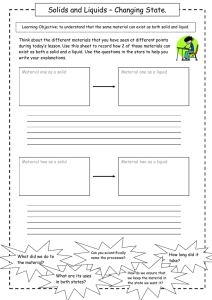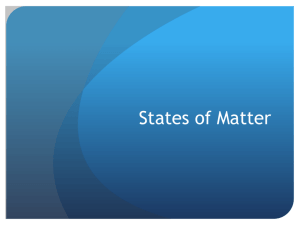Solids & Liquids
advertisement

Solids & Liquids NM Standards Students know the atoms and molecules in liquids move in a random pattern relative to one another because the intermolecular forces are too weak to hold the atoms or molecules in a solid form. Intermolecular Forces Forces of attraction between different molecules rather than bonding forces within the same molecule. Dipole-dipole attraction Hydrogen bonds Dispersion forces Forces and Phases o Substances with very little intermolecular attraction exist as gases o Substances with strong intermolecular attraction exist as liquids o Substances with very strong intermolecular (or ionic) attraction exist as solids Phase Differences Solid – definite volume and shape; particles packed in fixed positions; particles are not free to move Liquid – definite volume but indefinite shape; particles close together but not in fixed positions; particles are free to move Gas – neither definite volume nor definite shape; particles are at great distances from one another; particles are free to move Three Phases of Matter Types of Solids Crystalline Solids: highly regular arrangement of their components [table salt (NaCl), pyrite (FeS2)]. Unit Cell The smallest portion of a crystal lattice that shows the three-dimensional pattern of the entire lattice Types of Solids Amorphous solids: considerable disorder in their structures (glass and plastic). States of Matter Heating/cooling curve for water Heating curve Cooling Curve Heating and Cooling curves Phase changes occur where the temperature stays flat. After a phase change is complete and all molecules are in the same state the temperature increases to the next phase change. Phase Diagram Critical point: The vapor-liquid critical point denotes the conditions above which distinct liquid and gas phases do not exist. Triple point: Where all phases coexist in a stable equilibrium Normal freezing and boiling points occur at 1 atm pressure read off the diagram





